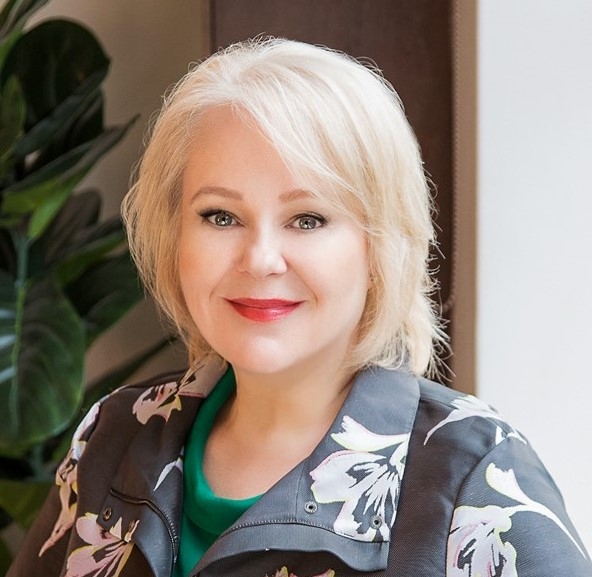What It Takes to Change Hybrid Meetings for the Better
With roughly 45% of companies planning to lead the workforce using a hybrid model and 90% of organizations striving to adopt some virtual work after COVID restrictions diminish, it's evident that hybrid and virtual meetings are here to stay. However, with more Zoom meetings planned for the future, organizations need to focus on overcoming some of the most common challenges of hybrid and virtual meetings.
Identifying Challenges of Hybrid Meetings
The number of hybrid meetings are frequently increasing on employee calendars, due to some people returning to the office while others maintain a work-from-home policy either some of the time, or permanently.
Hybrid meetings include three types of people. First, the meeting facilitator, who could be in-room or virtual. Second, in-room participants, who are in a meeting space together. These are joined by the third type, virtual participants calling into the meeting using phone or a video conferencing platform such as Zoom, Microsoft Teams, or others. There is a new skill required for each of the three types of people when it comes to maximizing the effectiveness of hybrid meetings.
Despite the convenience of hybrid meetings that can quickly and efficiently connect dozens of people — whether they're in the office, at home, or even in their favorite local coffee shop —these meetings come with their fair share of obstacles. Identifying the challenges and resolving them will lead to tremendous potential for future hybrid meetings.
Lack of Ground Rules
Some organizations struggle to set specific ground rules for employees and participants around traditional in-room meetings. New problems have emerged in virtual meetings with people showing up late (or not at all), obviously multitasking on other tasks, leaving early, stubbornly refusing to put their camera on, or turning their camera off if things get tough.
An easy starting point to begin to address these issues is to tackle problems one at a time. For example, a straightforward way to avoid people talking over one another or not paying attention would be to set ground rules at the beginning of the meeting, before moving forward with anything else.
The meeting basics remain unchanged from our world before hybrid and virtual meetings. In traditional meetings, it is important to invite the right people, turn up on time, state the point of the meeting, state the agenda, take notes, recap, and follow up the meeting with the minutes, agreements, and next steps.
For virtual, simply adding ground rules around focus, participation, and cameras being on are all straightforward virtual boosts.
For hybrid, where some people are in-room and some are virtual, the first step in establishing ground rules might include having the group set their own ground rules around inclusion and participation equity for both the virtual and in-room participants.
Business leaders can proceed once everyone understands those rules, providing valuable information and insights to their team members.
Lack of Participation
Employee participation during meetings plays an integral role in helping the business boost productivity rates while getting everyone on the same page. Unfortunately, a lack of involvement in hybrid meetings has become a problem for many organizations.

This has led to virtual participants somehow feeling like coach passengers on a flight, while their in-room colleagues are being treated to the first-class experience. Virtual participants in a hybrid meeting are often shut off from participation, document sharing, side conversations, and viewing presentations. All participants, regardless of if they are virtual or in-room, should be treated like first-class attendees in the meeting.
The first step for business leaders and meeting facilitators is preparing the hybrid meeting with a “virtual first” attitude to ensure that virtual participants are not left out and that everything discussed and shared is available to everyone.
One key is to ask questions and get all participants involved in sharing their opinions and asking questions, whether they decide to type in the chatbox or participate via video or audio chat.
Feelings of Disconnect
Employees may experience disconnect due to technical issues and a lack of understanding about how hybrid meetings work, which proper training can easily address. Still other employees may experience the disconnect that comes from unclear communication and a lack of engagement between peers. This is a problem that dynamic leaders seek to address well before meetings begin.
An easy way to resolve this issue is for leaders to discover their employees' learning and communication preferences. This builds bridges between leaders and their team members, resulting in deeper engagement and much happier, more cohesive, and more productive meetings. An easy way for leaders to discover their employees' learning and communication preferences is to discover their Inner Genius Archetypes.
Recognizing the different Inner Genius Archetypes of various employees is a leader's answer to preventing disconnect while resolving other problems that can occur, such as unclear communication and a lack of engagement between peers. Discovering each participant’s Inner Genius Archetype will unlock communication and strive to overcome the disconnection many meeting attendees often experience.
How to Overcome Challenges and Improve Collaborative Efforts During Hybrid Meetings
Business leaders need to prioritize the needs of team members by learning more about how they communicate with one another. If leaders can communicate with employees based on their Inner Genius Archetypes by using Inner Genius as a tool to measure the Genius Quotient (GQ) of each person, they can avoid miscommunications and waste less time in meetings. Each team member learns, processes, and shares information differently based on their communication and learning preferences. When business leaders take the initiative to assess each individual, they can have more productive hybrid meetings while getting more team members to show up, focus, and participate.
If team members know how to effectively communicate with one another based on their learning preferences, it eliminates employee isolation, improves collaborative efforts, and boosts morale within the workplace. In addition, there is a greater sense of power among employees when they've unlocked their Inner Genius Archetype and understand the specific profile of those working alongside them each day.
 “Being geographically dispersed doesn’t need to change a thing…in fact, it can be better.”
“Being geographically dispersed doesn’t need to change a thing…in fact, it can be better.”
Working in a 100% virtual or hybrid work environment is here to stay. Business leaders quickly flexed to working on Zoom, Microsoft Teams, and other platforms. Yet some fundamental concerns around engagement, participation, motivation, and inclusion remain ongoing issues. Meeting facilitators have a huge opportunity to change the way people gather to discuss, plan, strategize, work on projects, or simply update each other on what’s happening in their geographically dispersed world. Being geographically dispersed doesn’t need to change a thing when it comes to team productivity…in fact, it can be better.
Building better teams and improving collaborative efforts during hybrid meetings can positively impact a company, leading to more success. When business leaders want to thrive while adopting a hybrid model that involves plenty of virtual meetings, identifying each individual's Inner Genius Archetype makes a difference.
--
 About: Global business educator and author Catherine Mattiske is founder of TPC — The Performance Company, a leading training and consulting organization that has worked with Fortune 100 companies around the world. Established in 1994, TPC has offices in Sydney, Los Angeles, New York, London, Singapore and Basel (Switzerland). The author of more than 30 books, her latest is “Unlock Inner Genius: Power Your Path to Extraordinary Success” (September 2021). Learn more at InnerGeniusNow.com.
About: Global business educator and author Catherine Mattiske is founder of TPC — The Performance Company, a leading training and consulting organization that has worked with Fortune 100 companies around the world. Established in 1994, TPC has offices in Sydney, Los Angeles, New York, London, Singapore and Basel (Switzerland). The author of more than 30 books, her latest is “Unlock Inner Genius: Power Your Path to Extraordinary Success” (September 2021). Learn more at InnerGeniusNow.com.





